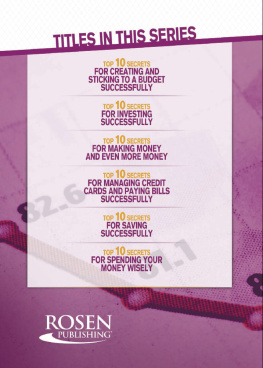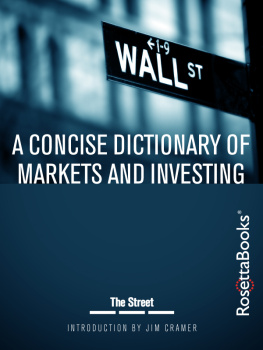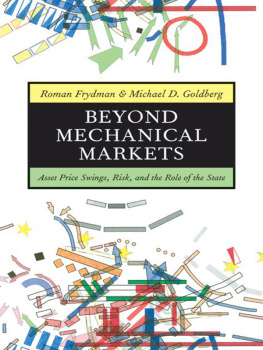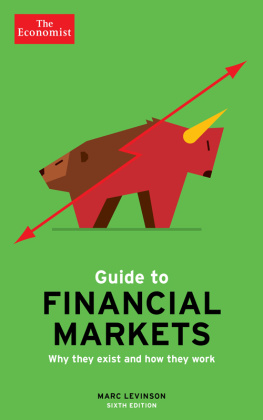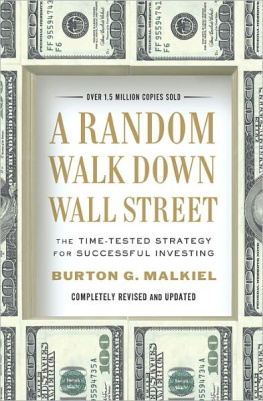Tim Price - Investing Through the Looking Glass: A Rational Guide to Irrational Financial Markets
Here you can read online Tim Price - Investing Through the Looking Glass: A Rational Guide to Irrational Financial Markets full text of the book (entire story) in english for free. Download pdf and epub, get meaning, cover and reviews about this ebook. year: 2016, publisher: HarrimanHouse, genre: Science. Description of the work, (preface) as well as reviews are available. Best literature library LitArk.com created for fans of good reading and offers a wide selection of genres:
Romance novel
Science fiction
Adventure
Detective
Science
History
Home and family
Prose
Art
Politics
Computer
Non-fiction
Religion
Business
Children
Humor
Choose a favorite category and find really read worthwhile books. Enjoy immersion in the world of imagination, feel the emotions of the characters or learn something new for yourself, make an fascinating discovery.

Investing Through the Looking Glass: A Rational Guide to Irrational Financial Markets: summary, description and annotation
We offer to read an annotation, description, summary or preface (depends on what the author of the book "Investing Through the Looking Glass: A Rational Guide to Irrational Financial Markets" wrote himself). If you haven't found the necessary information about the book — write in the comments, we will try to find it.
Tim Price: author's other books
Who wrote Investing Through the Looking Glass: A Rational Guide to Irrational Financial Markets? Find out the surname, the name of the author of the book and a list of all author's works by series.
Investing Through the Looking Glass: A Rational Guide to Irrational Financial Markets — read online for free the complete book (whole text) full work
Below is the text of the book, divided by pages. System saving the place of the last page read, allows you to conveniently read the book "Investing Through the Looking Glass: A Rational Guide to Irrational Financial Markets" online for free, without having to search again every time where you left off. Put a bookmark, and you can go to the page where you finished reading at any time.
Font size:
Interval:
Bookmark:
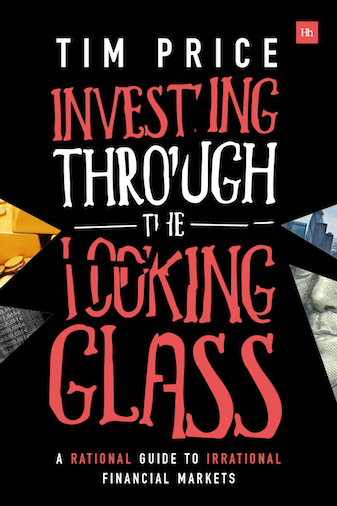
Praise for Investing Through the Looking Glass
Tim Price is one of the most cogent commentators on markets; this book contains wisdom and ideas that every investor should take note of. Tim has summarised the follies of Central Bankers, the avarice and general uselessness of financial advisers, and the bubble in asset prices that currently prevails. He comes up with a Manifesto which is designed to save us from the disastrous policies of the past two decades and to preserve and enhance capital. I thoroughly recommend Through the Looking Glass .
Jim Mellon, Investor and Chairman, Burnbrae Ltd
When Tim give speeches even informal talks crowds gather around him. Reading, his new book Investing Through the Looking Glass reminds me why. Its a crisp story of how our Alice in Wonderland financial world actually works told with wit, style and deep insights. George Soros said that there are some books that can make you a million dollars; this could be one of those books.
Bill Bonner, Founder and President, Agora Inc
Almost everything you think you know about finance, investing and money is wrong. In this wise, easy to read, and very independently minded book, Tim Price explains why. You might not agree with everything Tim says. But Through the Looking Glass will certainly make you think and might make you a lot of money too.
Merryn Somerset Webb, Editor in chief, MoneyWeek
Certifiable lunatics run the worlds central banks. And it takes a sane person to tell that truth. Tim Price is very sane.
Michael Covel, bestselling author of Trend Following and TurtleTrader
Provocative, enlightening and very well-written.
Guy Fraser-Sampson, author of The Mess Were In
A rational guide to irrational financial markets
Tim Price
Harriman House
HARRIMAN HOUSE LTD
18 College Street
Petersfield
Hampshire
GU31 4AD
GREAT BRITAIN
Tel: +44 (0)1730 233870
Email: enquiries@harriman-house.com
Website: www.harriman-house.com
First published in Great Britain in 2016
Copyright Tim Price
The right of Tim Price to be identified as the author has been asserted in accordance with the Copyright, Design and Patents Act 1988.
Print ISBN: 978-0-85719-536-4
eBook ISBN: 978-0-85719-537-1
British Library Cataloguing in Publication Data
A CIP catalogue record for this book can be obtained from the British Library.
All rights reserved; no part of this publication may be reproduced, stored in a retrieval system, or transmitted in any form or by any means, electronic, mechanical, photocopying, recording, or otherwise without the prior written permission of the Publisher. This book may not be lent, resold, hired out or otherwise disposed of by way of trade in any form of binding or cover other than that in which it is published without the prior written consent of the Publisher.
Whilst every effort has been made to ensure that information in this book is accurate, no liability can be accepted for any loss incurred in any way whatsoever by any person relying solely on the information contained herein.
No responsibility for loss occasioned to any person or corporate body acting or refraining to act as a result of reading material in this book can be accepted by the Publisher, by the Author, or by the employers of the Author.
To Anne, James, Donna with much love and fondest thanks
The most common of all follies is to believe passionately in the palpably not true. It is the chief occupation of mankind.
H. L. Mencken
No matter how cynical you become, its never enough to keep up.
Lily Tomlin
The financial services industry is unique. No other industry compensates its employees so generously while delivering such modest tangible value to its customers or society at large. Despite the best creative efforts of tens of thousands of extremely well-paid financiers, the former Federal Reserve Chairman Paul Volcker famously suggested that the most important financial innovation of the past 20 years was the ATM machine. In aggregate, investment expectations of even marginal added value from Wall Street and the City are misplaced, because by definition the market cannot beat itself.
But it can blow itself up. Ever since 2008 many investment practitioners have been engaged in something akin to a whodunit. Just how did we get into this mess? This book provides an answer, of sorts. Everybody did it . We all played a part.
As Lord Overstone once remarked, no warning can save people determined to grow suddenly rich. In the run-up to the Global Financial Crisis, accident-prone bankers were only doing what they always do: gambling (badly, it transpired), with other peoples money. There was also no shortage of irrational behaviour by property speculators, or homeowners, as they are sometimes called.
But the rot in the system runs deeper than just the fault lines scattered throughout the property market. After the collapse of Lehman Brothers in September 2008 most banks did not fail, because central bankers did not allow them to. The financial markets are now in thrall to these unelected monetary technocrats. The extraordinary monetary policies that central bankers are now pursuing are destabilising all financial markets and suppressing their natural price signals.
A growing property and banking crisis assumed a new dimension over the weekend of 1314 September 2008. At just past 7am on the Saturday morning, Jamie Dimon, the Chief Executive Officer of JP Morgan, Americas largest bank, walked into his home library and dialled in to a conference call with his management team. Here is what he told them:
You are about to experience the most unbelievable week in America ever, and we have to prepare for the absolutely worst case. Heres the drill. We need to prepare right now for Lehman Brothers filing [for Chapter 11 bankruptcy protection]. And for Merrill Lynch filing. And for AIG filing. And for Morgan Stanley filing. And potentially for Goldman Sachs filing.
There was a collective gasp on the phone.
Lehman Brothers would indeed file for Chapter 11, shortly after midnight on Sunday 14 September 2008. But as the US authorities watched in disbelief as the global financial system started to implode on itself, they decided that the rest of Wall Street would not be allowed to follow in Lehmans footsteps. So Merrill Lynch, the thundering herd , was swept into the welcoming arms of Bank of America. The global insurance giant AIG was rescued. Morgan Stanley was bailed out, with the help of $107 billion in loans from the US Federal Reserve (the Fed). Goldman Sachs, like the other remaining investment banks, was permitted to convert to a bank holding company, and borrow directly from the Fed a privilege denied to Lehman Brothers in its hour of need.
The financial system was saved. For the time being, at least. But at extraordinary cost. Five years after the failure of Lehman Brothers, the Dallas Federal Reserve estimated that the full cost of the financial crisis was as much as $14 trillion very nearly a full year of US gross domestic product.
The financial crisis wasnt triggered by the failure of Lehman Brothers or by a shock reversal in the fortunes of any one individual firm. Lehman Brothers was merely a symptom. So, for that matter, was the decline in value of so-called sub-prime mortgages associated, in popular opinion, with Wall Streets near-terminal collapse. Sub-prime mortgages were merely the first part of a gigantic edifice of debt to fall.
Font size:
Interval:
Bookmark:
Similar books «Investing Through the Looking Glass: A Rational Guide to Irrational Financial Markets»
Look at similar books to Investing Through the Looking Glass: A Rational Guide to Irrational Financial Markets. We have selected literature similar in name and meaning in the hope of providing readers with more options to find new, interesting, not yet read works.
Discussion, reviews of the book Investing Through the Looking Glass: A Rational Guide to Irrational Financial Markets and just readers' own opinions. Leave your comments, write what you think about the work, its meaning or the main characters. Specify what exactly you liked and what you didn't like, and why you think so.


